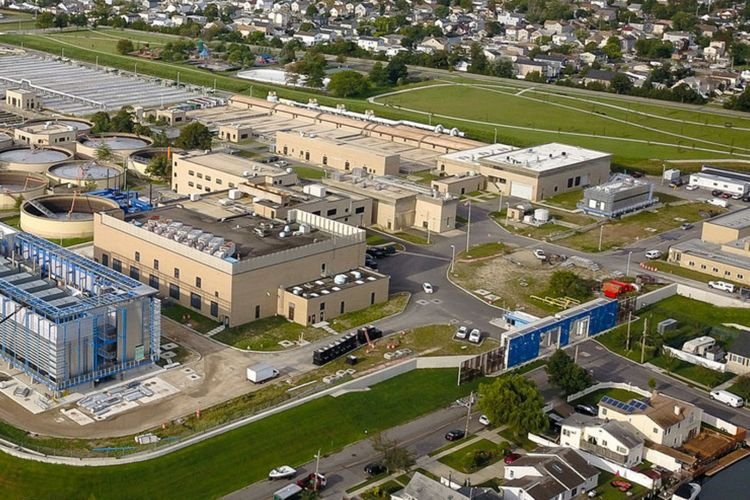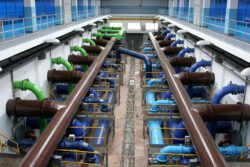Nassau County Sewer District 2 – Bay Park Sewage Treatment Plant

Nassau County Sewer District 2 – Bay Park Sewage Treatment Plant: Championing Environmental Health and Community Wellness
Introduction
Wastewater management is an often overlooked but critical facet of urban living. Efficient and effective sewage treatment is essential for public health, environmental sustainability, and quality of life. Nassau County Sewer District 2, specifically the Bay Park Sewage Treatment Plant, is a prime example of modern waste management infrastructure designed to serve a significant population with advanced treatment capabilities. This article will dive into the numerous aspects that define the Bay Park Sewage Treatment Plant, covering its service population, wastewater volume, treatment capacity, recent developments, ongoing projects, and community engagement efforts.
Population Served
Located in Nassau County, New York, Bay Park Sewage Treatment Plant (STP) serves a substantial portion of the region’s population. The plant is responsible for treating wastewater from approximately 600,000 residents spread across several towns and villages. The area it serves encompasses both densely populated urban locales and more suburban settings, which adds layers of complexity to its operations due to varied wastewater characteristics.
Wastewater Volume and Treatment Capacity
The Bay Park STP processes an average of 50 million gallons of wastewater per day (MGD) under normal conditions. However, it is designed to handle peak flows of up to 90 MGD, accommodating spikes that occur during rainstorms or other inflow events. The treatment capacity of the plant reflects its robustness and scale, designed to meet the high demands of a densely populated region.
Recent Local News
In recent years, the Bay Park STP has made headlines for both its challenges and achievements. In 2012, during Hurricane Sandy, the plant was severely damaged, leading to significant infrastructure rehabilitation efforts. This event underscored the importance of resilient infrastructure in the face of natural disasters. The response to this disaster catalyzed several major initiatives aimed at restoring and improving the plant’s operations, ultimately leading to its transformation into a more advanced and resilient facility.
A significant piece of recent news is the $830 million rehabilitation project jointly funded by federal, state, and local governments. This project includes constructing a strategic pipeline to divert treated effluent from Bay Park to the Cedar Creek outfall in Wantagh. This endeavor, known as the Bay Park Conveyance Project, aims to reduce nitrogen discharge into the Western Bays, thus protecting marine ecosystems and improving water quality. The project’s completion is anticipated around 2024.
Key Projects
Several key projects are essential for understanding the current state and future potential of the Bay Park STP. Below is an overview of some of the most notable initiatives:
1. Bay Park Conveyance Project
The Bay Park Conveyance Project stands out as one of the most ambitious and impactful initiatives. The core goal is to reroute treated wastewater effluent to an ocean outfall, thereby reducing nitrogen pollution in local bays. The project involves constructing a mile-long force main alongside rehabilitating existing sewer infrastructure. This complex undertaking is expected to have long-term positive impacts on the region’s water quality and marine habitats.
2. Hurricane Sandy Resiliency Upgrades
After Hurricane Sandy wreaked havoc on Bay Park STP, significant resources were allocated to not only repair but also upgrade the facility. These efforts include installing flood barriers, upgrading electrical systems, and improving structural resilience. The investment in these upgrades was designed to ensure the plant can withstand future extreme weather events, ensuring continuous service even under adverse conditions.
3. Enhanced Nitrogen Removal
Nitrogen pollution is a significant concern due to its detrimental effects on aquatic ecosystems. The Bay Park STP has invested in advanced treatment technologies to enhance nitrogen removal from wastewater. By upgrading its biological treatment processes and incorporating new technologies like membrane bioreactors (MBRs), the plant aims to significantly reduce nitrogen levels in its effluent.
4. Energy Efficiency and Sustainability Initiatives
In line with global trends towards sustainability, the Bay Park STP has embarked on initiatives to improve energy efficiency and reduce its carbon footprint. Upgrading to energy-efficient equipment, utilizing renewable energy sources, and optimizing operational processes have been core strategies. These efforts not only reduce operational costs but also contribute to broader environmental goals.
Community Engagement
Effective sewage treatment facilities don’t merely operate in isolation; they significantly impact and interact with the communities they serve. Recognizing this, the Bay Park STP has taken significant steps to engage with and educate the community about its operations and environmental stewardship roles.
1. Public Outreach Programs
One of the key strategies has been the initiation of public outreach programs to educate residents about wastewater treatment processes, environmental impacts, and ongoing projects. By offering plant tours, informational brochures, and educational workshops, Bay Park STP ensures transparency and fosters a sense of community involvement.
2. Stakeholder Consultation
For significant projects like the Bay Park Conveyance initiative, stakeholder consultation has been a crucial element. Public meetings, online forums, and feedback sessions have provided platforms for residents to voice their concerns and contribute to decision-making processes. This approach has helped build public trust and ensure that projects align with community needs and expectations.
3. Collaboration with Educational Institutions
Collaborating with local schools and universities, Bay Park STP offers educational programs that aim to inspire the next generation of environmental professionals. From internships to research partnerships, these initiatives offer students hands-on experience and insight into the field of wastewater management.
Environmental Impact
The commitment to mitigating environmental impact is a cornerstone of the Bay Park STP’s operations. By investing in state-of-the-art treatment technologies and infrastructure resilience, the facility aims to protect the local environment, particularly the ecologically sensitive water bodies.
Nitrogen Reduction and Water Quality
Nitrogen reduction is a primary focus due to the harmful effects of nitrogen on aquatic ecosystems, such as algal blooms and hypoxic conditions. Through advanced treatment processes, the Bay Park STP has significantly reduced nitrogen levels in its effluent, thus contributing to improved water quality in local bays and estuaries.
Resilience Against Natural Disasters
The upgrades made post-Hurricane Sandy serve as a testament to the plant’s commitment to resilience. By ensuring that the facility can withstand extreme weather events, Bay Park STP not only secures its continued operation but also prevents potential environmental contamination that could result from infrastructure failure.
Renewable Energy Utilization
Energy efficiency and sustainability initiatives further demonstrate a commitment to reducing environmental impact. The utilization of renewable energy sources and energy-efficient equipment aligns with broader environmental goals and contributes to the overall reduction of the facility’s carbon footprint.
Conclusion
The Bay Park Sewage Treatment Plant is a critical asset for Nassau County Sewer District 2, serving a significant population with advanced wastewater treatment capabilities. Through a combination of resilient infrastructure, state-of-the-art treatment technologies, and robust community engagement efforts, the plant has positioned itself as a leader in modern wastewater management.
Recent projects like the Bay Park Conveyance initiative and Hurricane Sandy resiliency upgrades underscore the facility’s commitment to environmental stewardship and operational excellence. These efforts not only ensure the plant’s ability to meet current and future demands but also contribute positively to the regional environment and community well-being.
As wastewater management continues to evolve with technological advancements and environmental challenges, facilities like the Bay Park STP stand at the forefront, embodying the principles of sustainability, resilience, and community engagement. The ongoing initiatives and future projects promise to further enhance the plant’s capabilities, ensuring that it remains a cornerstone of environmental health for Nassau County for years to come.

